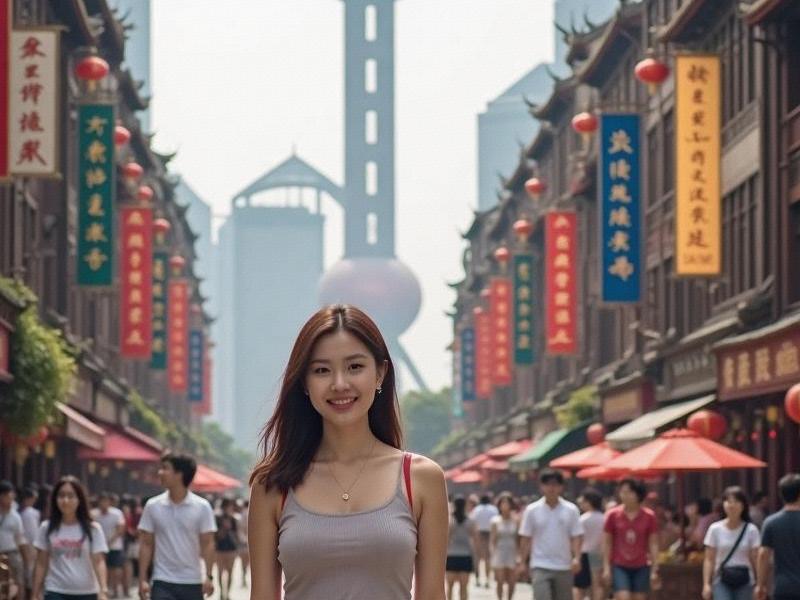Shanghai Style: The Evolution of Beauty Standards in China's Cosmopolitan Capital
⏱ 2025-05-29 00:13 🔖 上海龙凤419
📢0℃

Chapter 1: Historical Foundations
Shanghai's beauty heritage:
- 1920s: Birth of modern Chinese beauty standards
- Haipai (海派) culture's Western influences
- 1980s: Post-reform beauty salon boom
- 2000s: Korean/Japanese beauty wave adoption
Chapter 2: The Shanghai Look
Defining characteristics:
- Porcelain skin obsession (¥3.8B whitening market)
- Slim yet curvaceous "bamboo shoot" figure ideal
- Natural-looking double eyelid preference
- 78% prefer "elegant" over "sexy" as primary aesthetic
Chapter 3: Economic Drivers
上海龙凤千花1314
Beauty industry statistics:
- ¥42B annual cosmetic sales (2024)
- 6,800 beauty salons citywide
- Average monthly beauty spending: ¥2,800
- 38% of luxury purchases are beauty products
Chapter 4: Beauty Entrepreneurship
Success stories:
- 12 homegrown cosmetic brands worth over ¥1B
- 68% female-led beauty startups
- Live-streaming beauty queens earning ¥50M annually
- Custom skincare formulation services
Chapter 5: Technological Integration
上海花千坊龙凤
Innovation trends:
- AI-powered skin diagnostics in 92% high-end salons
- VR makeup testing stations
- Blockchain cosmetic authentication
- 3D printed custom foundation
Chapter 6: Social Media Impact
Digital influence:
- 420,000 beauty-related Weibo posts monthly
- Top 100 Shanghai beauty influencers average 8.2M followers
- Xiaohongshu (Little Red Book) drives 62% of trends
- Douyin makeup challenges
Chapter 7: Cultural Contradictions
上海品茶网
Modern tensions:
- Western vs. Eastern beauty ideals
- Career women's time management struggles
- Generational preference gaps
- Natural beauty movement backlash
Chapter 8: Future Projections
Emerging trends:
- Gender-neutral beauty products
- Sustainability-focused cosmetics
- High-tech anti-pollution skincare
- Traditional Chinese medicine revival
Shanghai's beauty culture continues to evolve as both a reflection of and catalyst for broader social changes in Chinese society.
Shanghai's Enchanting Nightlife: A Symphony of Lights and CultureShanghai’s Gilded Lounges: Where Dynasty Elegance Meets AI-Driven Extravagance"Shanghai 2025: Where Ancient Canals Meet Quantum Computing - The Reinvention of China's Global Gateway"Shanghai 2025: The Making of a Next-Generation Global Financial Capital"Beyond Cheongsams and Pearls: The Multidimensional Shanghai Woman of 2025"Shanghai's Modern Women: How China's Cosmopolitan Capital is Redefining Female Success in 2025Shanghai's Neuro-Aesthetic Vanguard: Redefining Global Beauty Through Quantum Heritage SystemsThe 80km Economic Revolution: Shanghai's Bold Experiment in Regional IntegrationThe Shanghai Beauty Revolution: How China's Global City is Redefining Femininity in 2025Shanghai’s Quantum Lounges: Where Imperial Opulence Meets Blockchain Elegance
"Silk, Screens and Self-Expression: Shanghai Women Redefining Beauty in the Digital Era"The New Shanghainese Woman: Redefining Beauty and Ambition in China's Global CityThe Greater Shanghai Megaregion: How One City is Redefining Urban Integration in China"Shanghai 2025: The City Where Future and Tradition Share a Skyline"Exploring the Rich Tapestry of Shanghainese Culture: A Journey Through Tradition and ModernityShanghai 2045: Reinventing Urban Civilization at the Yangtze Delta"Silk and Smartphones: The Dual Identity of Shanghai's Modern Women"Shanghai's Dual Identity: Where Futurism Meets Nostalgia in China's Premier Global CityShanghai 2025: Where Futurism Meets Tradition in China's Global MegacityShanghai 2040: The Making of a Global Megacity Region

